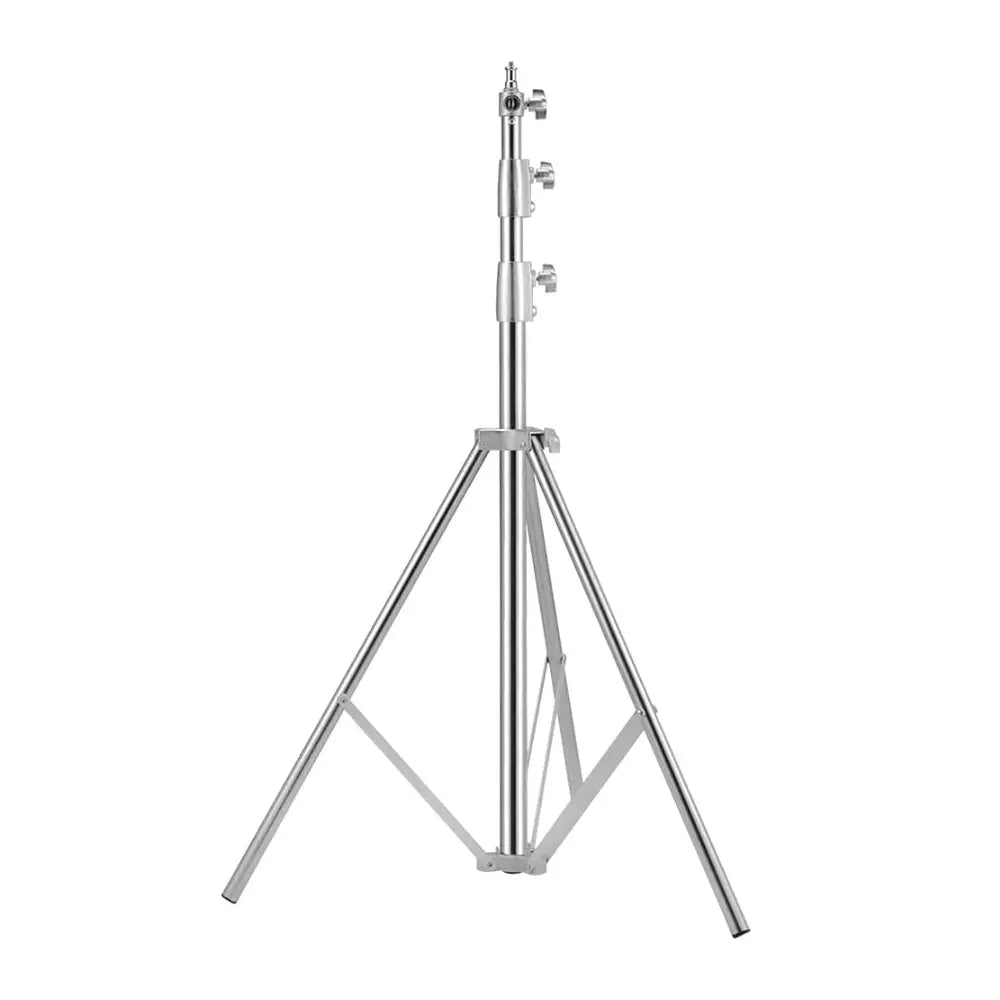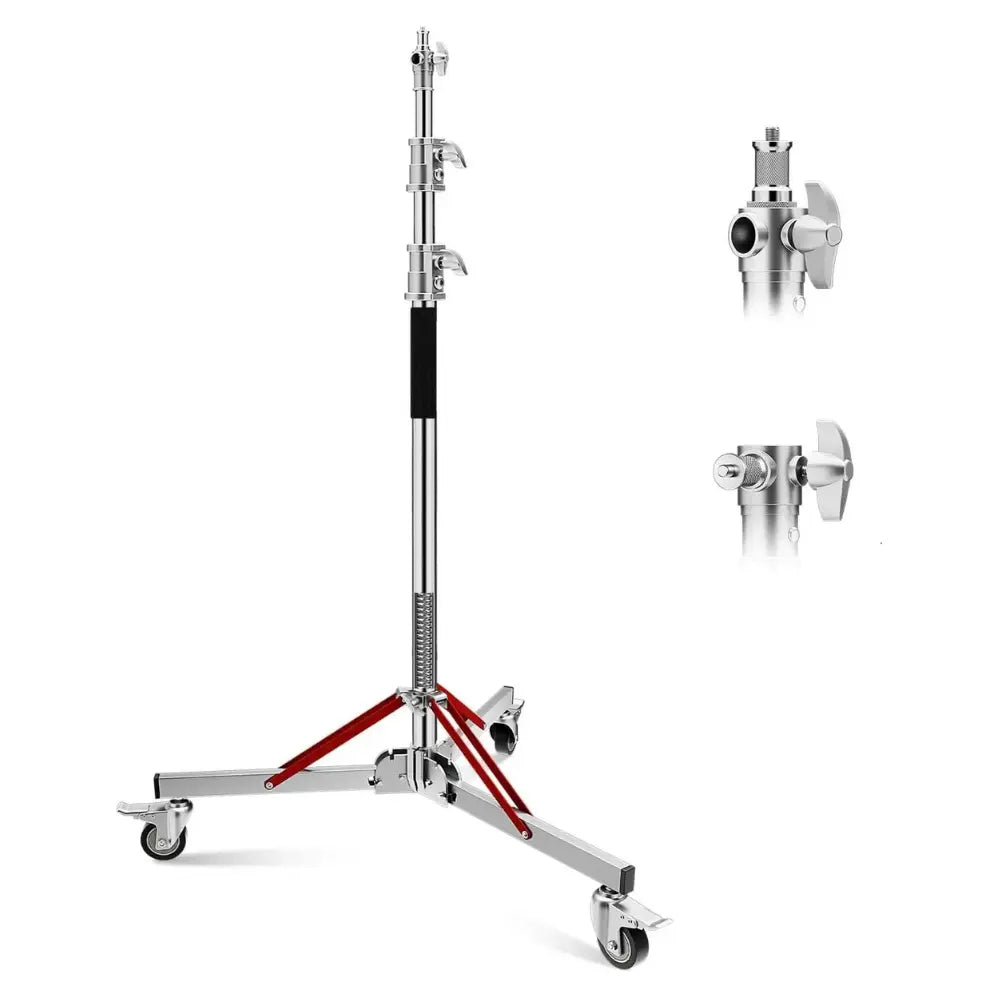

.jpg)
When you're capturing video or photos, the stand you choose makes a bigger difference than you might expect. Whether you're shooting a cinematic sequence, setting up a talking-head video, or taking product shots in a studio, stability and precision are non-negotiable. A good stand doesn't just hold your gear, it unlocks better angles, steadier frames, and more freedom to focus on your creative vision. But with all the options out there, choosing the right stand can feel overwhelming.
You might be wondering: Does height really matter? What if you’re working in tight spaces? Should you go lightweight or heavy-duty? What kind of adjustability should you expect? And how mobile should your stand be?
This guide will walk you through everything you need to know so you can choose a stand that actually fits your needs. Along the way, you’ll see why creators often turn to Glide Gear when they’re serious about their setup.
Height isn't just about how tall a stand can go. It affects your shooting perspective, your lighting position, and your overall framing. If you're working in a small home studio or cramped corner, you’ll want a stand that offers flexible height without dominating your space. On the other hand, for outdoor shoots or overhead lighting, maximum height becomes essential.
Look for a stand with a wide height range, low enough for tabletop work and tall enough to handle overhead setups. Glide Gear's LS 50, for instance, is compact and adjustable, making it a solid pick for creators working in mixed environments.

A stand’s load capacity tells you what kind of equipment it can safely support. This is especially important if you’re using heavier lights, cameras, or any gimbal camera setups. Overloading a lightweight stand can lead to tipping, sagging, or even a total collapse.
When you’re working with a DSLR and attachments like a camera stabilizer or monitor, don’t take chances. Always check the maximum weight your stand can hold. For those using professional gear, heavy-duty options like Glide Gear’s LW 50 are designed to handle more weight with total stability.

Your stand should be able to adapt as quickly as your shoot changes. That means easy-to-use locking mechanisms, smooth extensions, and multiple mounting options. You don’t want to waste time fiddling with knobs when the light’s perfect.
Choose stands with telescoping legs and adjustable arms. It’s also helpful to find models with 360-degree rotation or tilting heads, especially if you’re using accessories like a gimbal stabilizer or reflector arm. Glide Gear designs their stands with flexibility in mind, so you’re not stuck fighting your equipment.
If your stand wobbles, so will your shot. Stability is the foundation of sharp, clean visuals. Think wide-leg bases, locking casters, weight hooks, or stabilization kits. When you're outdoors or shooting on uneven ground, this becomes even more critical.
The LS 50 provides dependable stability for basic setups, but when you’re working with heavier gear or moving between shots, the LW 50’s heavy-duty build and locking wheels bring extra peace of mind. No shakes. No shifts. Just clean, locked-in support.
Sometimes, the perfect shot means moving across a space, resetting angles, or adjusting light quickly. That’s where mobility matters. Stands with wheels, or those designed to fold and transport easily, give you flexibility without breaking your rhythm.
If you’re working in a fast-paced studio or switching between multiple setups, the LW 50 becomes a clear winner. Its heavy-duty wheels and locking system mean you can reposition without compromising your setup.
You might be switching between a DSLR, phone, or a gimbal rig depending on the shoot. Not every stand handles these transitions well. You need compatibility across gear types to keep your workflow simple.
Look for universal mounting points and modular add-ons. Even if you're using a phone tripod or a compact camera tripod, it pays to future-proof your investment with a stand that can grow with you.
The difference between a stand that lasts and one that lets you down lies in the build. Materials matter, aluminum tends to be a good balance between strength and portability. Poorly built stands may bend, break, or wear out at the joints after just a few months of use.
Glide Gear stands use premium materials engineered for both studio and fieldwork. Their attention to detail in welds, locks, and joints makes their products dependable tools for repeat use.
Let’s be real, if you're working on content that involves showing behind-the-scenes or building a visible set, the gear you use also reflects your brand. Clean, minimal, professional-looking equipment enhances the impression you leave on clients and viewers alike.
Glide Gear stands look as good as they perform. Sleek, functional, and studio-ready. No flashy gimmicks, just tools made for the work.
Glide Gear’s catalog supports every level, from beginner to pro, whether you’re setting up a simple tripod stand or building a complex multi-cam rig.
A solid stand still needs to fit into your workflow. Think about how often you'll need to pack it up, take it on the road, or stash it between shoots. Foldability, carry handles, and low-profile design all count.
Glide Gear’s stands check those boxes, especially if you're using them in a hybrid work space where everything must be packed down fast.
Choosing the right stand isn’t about chasing the most expensive option. It’s about matching your gear to your real-world needs. Once you’ve narrowed down height, load, adjustability, stability, and mobility, your decision becomes much easier.
Glide Gear hits that sweet spot between usability and quality. If you’re building a setup that works reliably day after day, without shaking, slipping, or slowing you down, then their stands should absolutely be on your list.
Don’t wait until your shot gets ruined or your gear gets damaged. A well-chosen stand supports your craft at every level.
Shop durable photo & video tripod stands at Glide Gear. Find the right height, stability, and mobility for every creative setup.